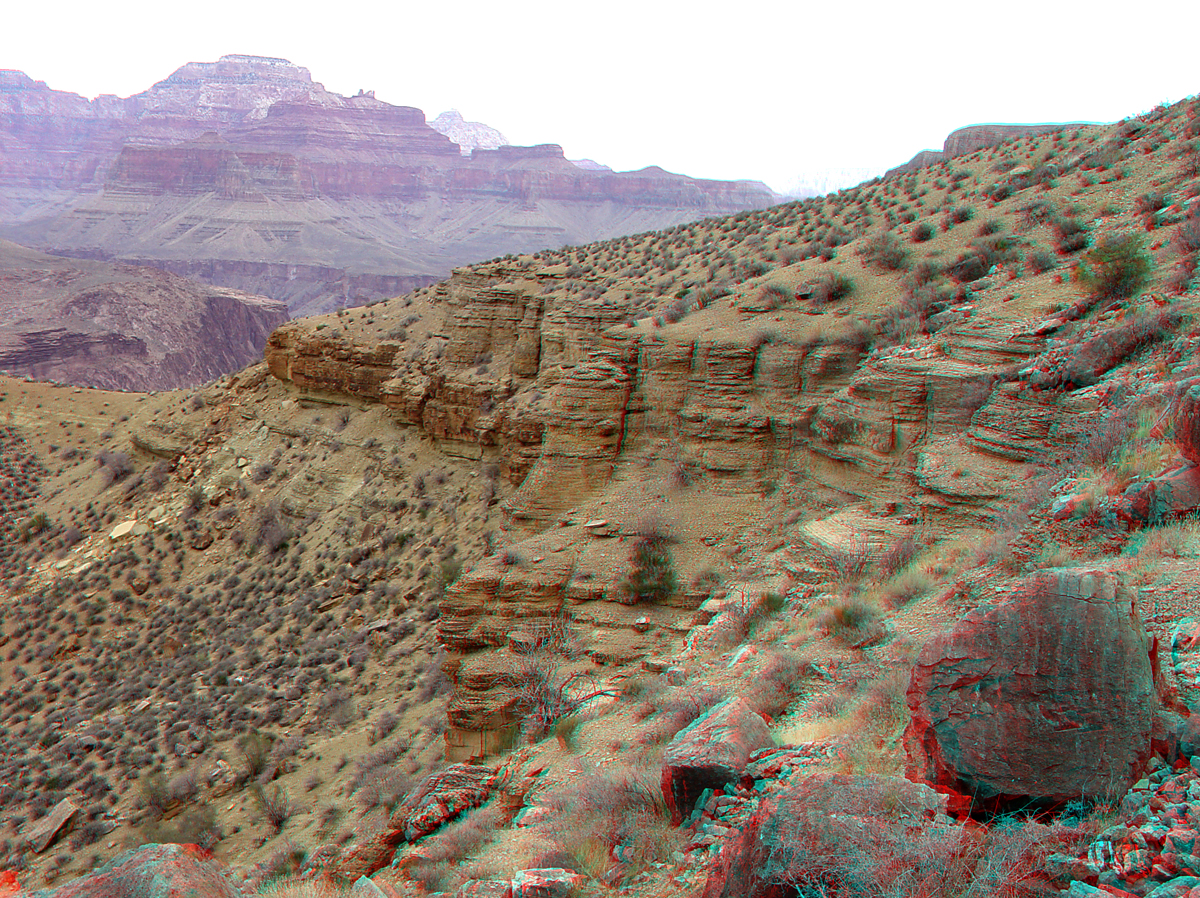
 |
| This view shows interbedded sandstone and shale beds in the upper Bright Angel Shale along South Kaibab Shale. The Bright Angel Shale is stratigraphically gradational with the underlying Tapeats Sandstone. In Cambrian time (about 525 million years ago), a Grand Canyon region gradually became submerged below a shallow seaway. Sediments eroding from the coastline or carried by rivers were deposited in the sea. Current moved, reworked and sorted the sediments into sandy offshore shoals and bars (which later became sandstone beds), mudflats and into deeper quieter settings where mud and silt accumulated (later becoming shale). Beds of sandstone, siltstone, mudstone, shale, and limestone pinch out, transition to other lithologies, or interfinger with other beds across the region. Although relatively rare, the Cambrian-age sedimentary rocks yield fossils (trilobites), but tracks and trails of burrowing and crawling organism are locally abundant and can be seen in rocks used to line the trails. (Beus, 1987; Beus and Morales, 1990; Mathis and Bowman, 2005). |